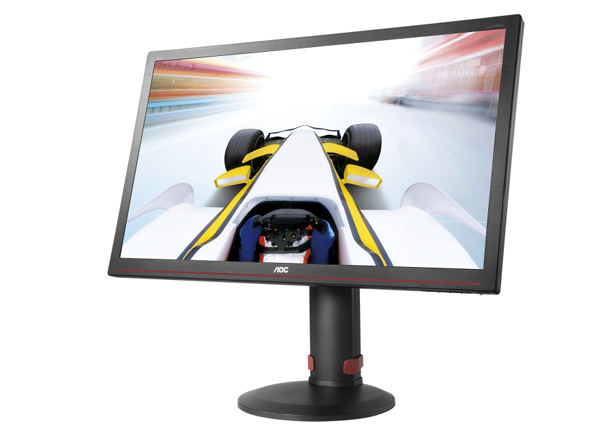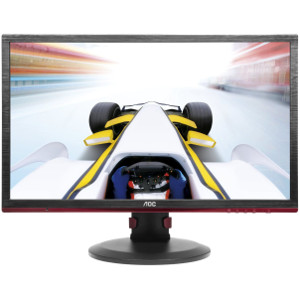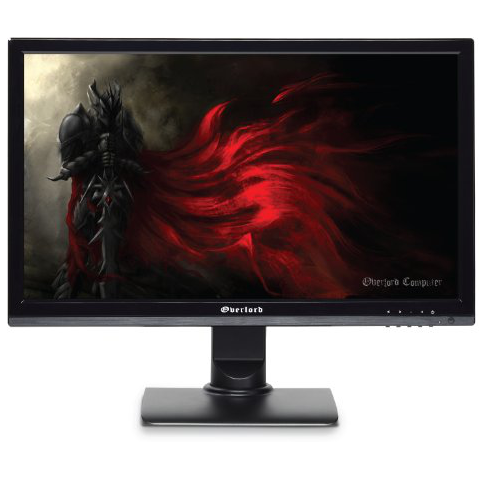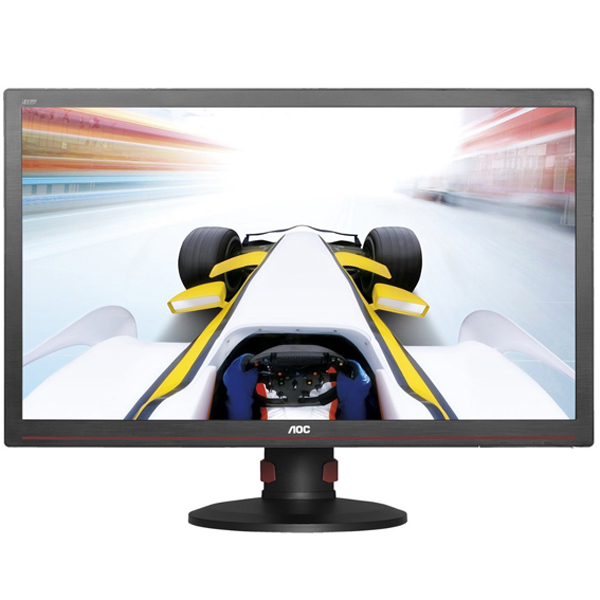Early Verdict
If you can live without G-Sync and blur reduction, the G2770PQU makes a great choice for budget-constrained gamers. It’s the cheapest 144Hz 27-inch screen out there if you are OK with 1920 x 1080 resolution.
Pros
- +
Excellent contrast, black levels, and screen uniformity
- +
solid color accuracy
- +
less-expensive than other 27-inch 144Hz screens
Cons
- -
No blur-reduction feature
- -
a tad more input lag than the competition
Why you can trust Tom's Hardware
AOC G2770PQU 27-Inch 144Hz Gaming Monitor Review
There’s no question that gaming displays are undergoing something of an evolution. Since the beginning, LCD panels have had to play catch-up to the smooth motion high-res CRTs of old. Sample-and-hold technology places limits on the quality of fast motion, and only through some fancy footwork can they be overcome.
Panels response time (the time it takes to actually draw each frame) and input lag have improved greatly over the past few years. But video cards have progressed even faster. Today’s top graphics boards can easily top 60 FPS in most games at the highest resolutions and detail levels.
The only way for a display to keep up is to increase its refresh rate. Until we all have G-Sync-enabled screens, it means buying a monitor that can run at rates above 60Hz. We’ve looked at several 120 and 144Hz products, including AOC’s G2460PQU and the Overlord Tempest X270OC.
Today we have AOC’s other 144Hz screen in our lab, the G2770PQU. It’s a TN-based panel sporting 1920 x 1080 resolution and a 27-inch diagonal screen size.
With high-speed IPS panels and G-Sync products on the horizon, the G2770PQU may seem a bit old-school by comparison. Don’t be swayed by its panel technology, however. We’ve demonstrated time and time again that the only major advantage offered by IPS is its superior off-axis image quality. In every other metric, TN is equal in performance. In the area of contrast, it still holds a slight edge, in fact.
The G2770PQU’s greatest draw, however, is its 144Hz operating mode. It also adds 100 and 120Hz options to the Windows refresh rate selections. That way, it can be tailored to your particular frame-rate requirement. There’s no sense in running at 144Hz if you can only manage a peak rate of 100 FPS. While G-Sync promises the best solution for signal-rate matching, the extra flexibility here is not without value.
AOC employs white LEDs arrayed at the panel edges and FHD resolution. Like all other fast-refresh monitors (except the Overlord IPS screen), it achieves 8-bit color depth by applying frame-rate conversion to a 6-bit native panel. This may be of concern to some, but we can assure you in all our tests of similar products, we could not see any evidence of banding or compression unless it was already present in the content.
Get Tom's Hardware's best news and in-depth reviews, straight to your inbox.
On paper, the G2770PQU looks like a great choice for all but the most expensive systems. Let’s see how it performs in our hands-on tests.
Current page: AOC G2770PQU 27-Inch 144Hz Gaming Monitor Review
Next Page Packaging, Physical Layout And Accessories
Christian Eberle is a Contributing Editor for Tom's Hardware US. He's a veteran reviewer of A/V equipment, specializing in monitors. Christian began his obsession with tech when he built his first PC in 1991, a 286 running DOS 3.0 at a blazing 12MHz. In 2006, he undertook training from the Imaging Science Foundation in video calibration and testing and thus started a passion for precise imaging that persists to this day. He is also a professional musician with a degree from the New England Conservatory as a classical bassoonist which he used to good effect as a performer with the West Point Army Band from 1987 to 2013. He enjoys watching movies and listening to high-end audio in his custom-built home theater and can be seen riding trails near his home on a race-ready ICE VTX recumbent trike. Christian enjoys the endless summer in Florida where he lives with his wife and Chihuahua and plays with orchestras around the state.
-
eklipz330 "At 144Hz, motion is very smooth with no obvious ghosting or artifacting. While capabilities like LightBoost are helpful at 60Hz, we’re not sure they're really needed at the higher rates."Reply
I completely agree. I use a benq xl2411z, and i can understand turning on the blur reduction feature at 60hz. But at 100hz and up, i just don't see the reason why. the blur reduction actually detracts from the overall experience, increases ghosting and crosstalk in particular areas of the screen. Even with modded drivers, it still doesn't seem like the best course of action.
but light reduction at around 72hz is awesome. the only issue is the flickering, but man is the picture crisp -
NeatOman What do we want!?..Reply
- 2560x1440 144Hz ! !
When do we want it!?
- NOW ! !
From what i heard when you get close to 120Hz or above you almost can't see the tearing from no-sync at all vs G-Sync, but if it has it for little to now extra charge (like im hoping will happen with free-sync) then ok.. lol -
Bowmaster 2560x1440 144hz, <1ms response, OLED, under $500. Maybe someday... right now to do something like that would take a few more 0's on the price tag sadly, but that would look sooooo pretty at 27-30 inches. Fun to dream!Reply -
Bowmaster 2560x1440 144hz, <1ms response, OLED, under $500. Maybe someday... right now to do something like that would take a few more 0's on the price tag sadly, but that would look sooooo pretty at 27-30 inches. Fun to dream!Reply -
huilun02 All I ask for is a 60Hz 1080p IPS with Gsync/Freesync. Screen tearing elimination while still practical and economical. Low entry price for faster adoption by the masses.Reply
But no, manufacturers insist on making it exclusive to the most high end/expensive models. They want to milk the most out of this tech by keeping it elusive.
"With speedy G-Sync-capable monitors starting to emerge, is the tech still a relevant choice?" What a stupid question to ask. Just about every monitor that comes with Gsync ARE 144Hz TN panels. Where its benefit is the least noticeable... -
soldier44 Been gaming at 2560 x 1600 for over 4 years now and have moved to a Asus 32 inch 4K display with 2 GTX 780 Classifieds running it. Smooth as silk. 1080p is so 2008.Reply -
thequn i would be in if it was not a tn pan. unless they changed tech when I was not looking but its 6 bit color and not 8Reply



